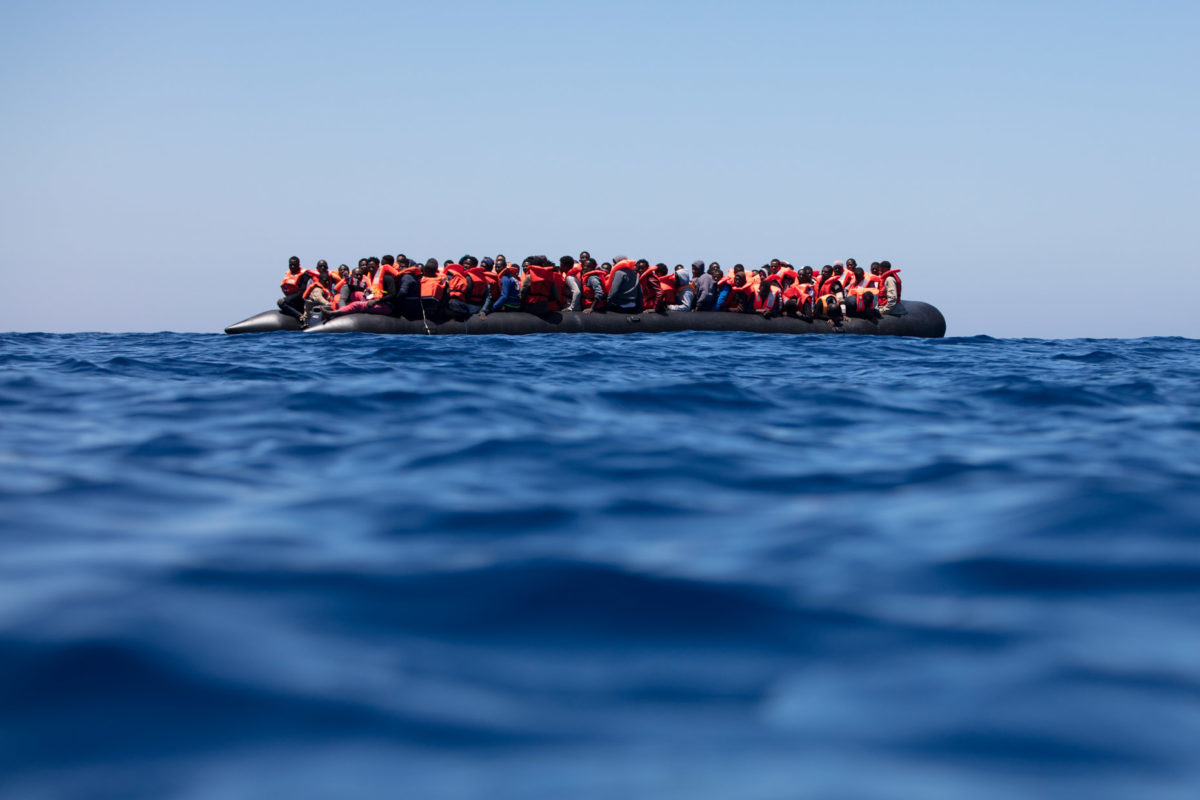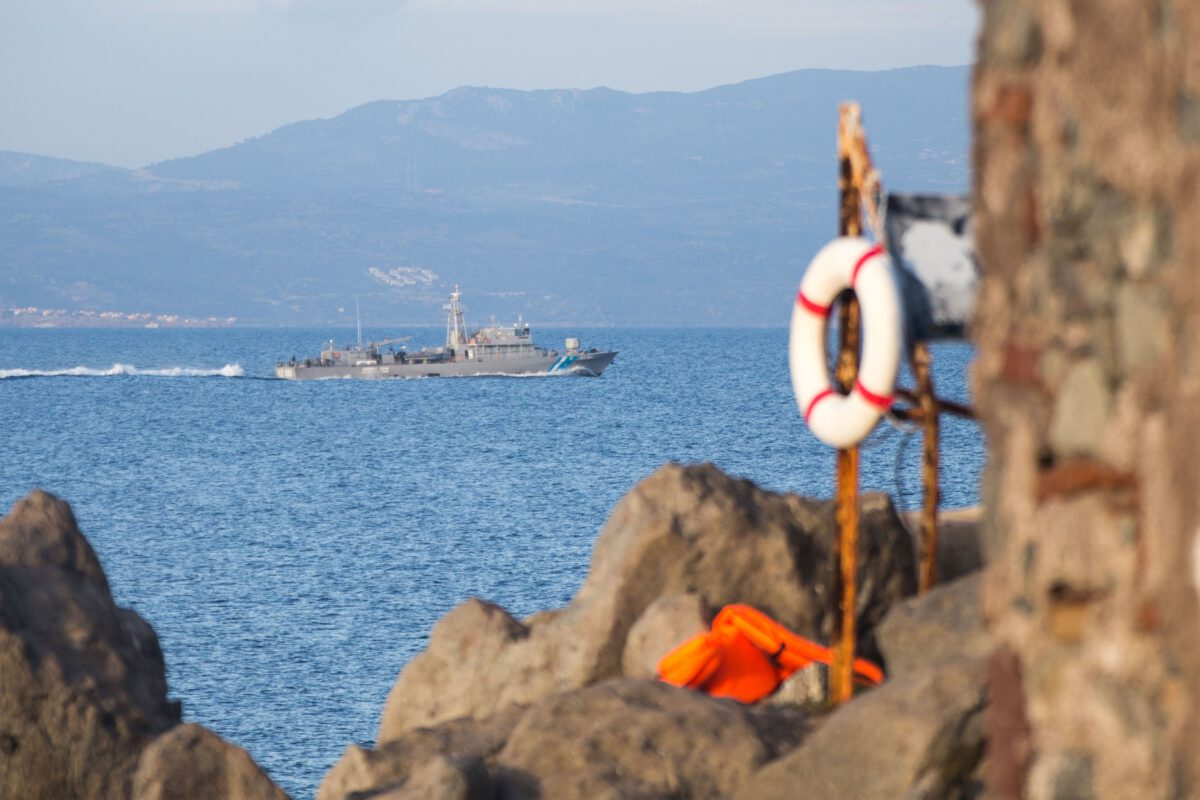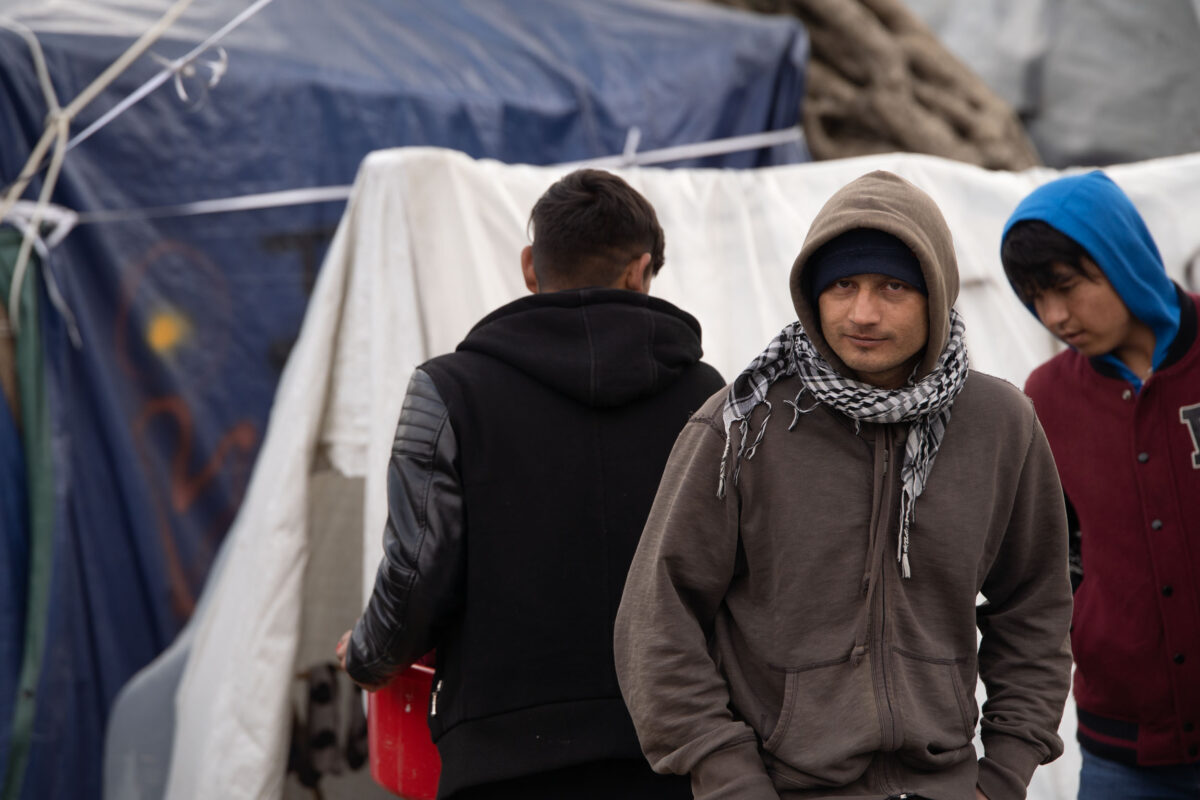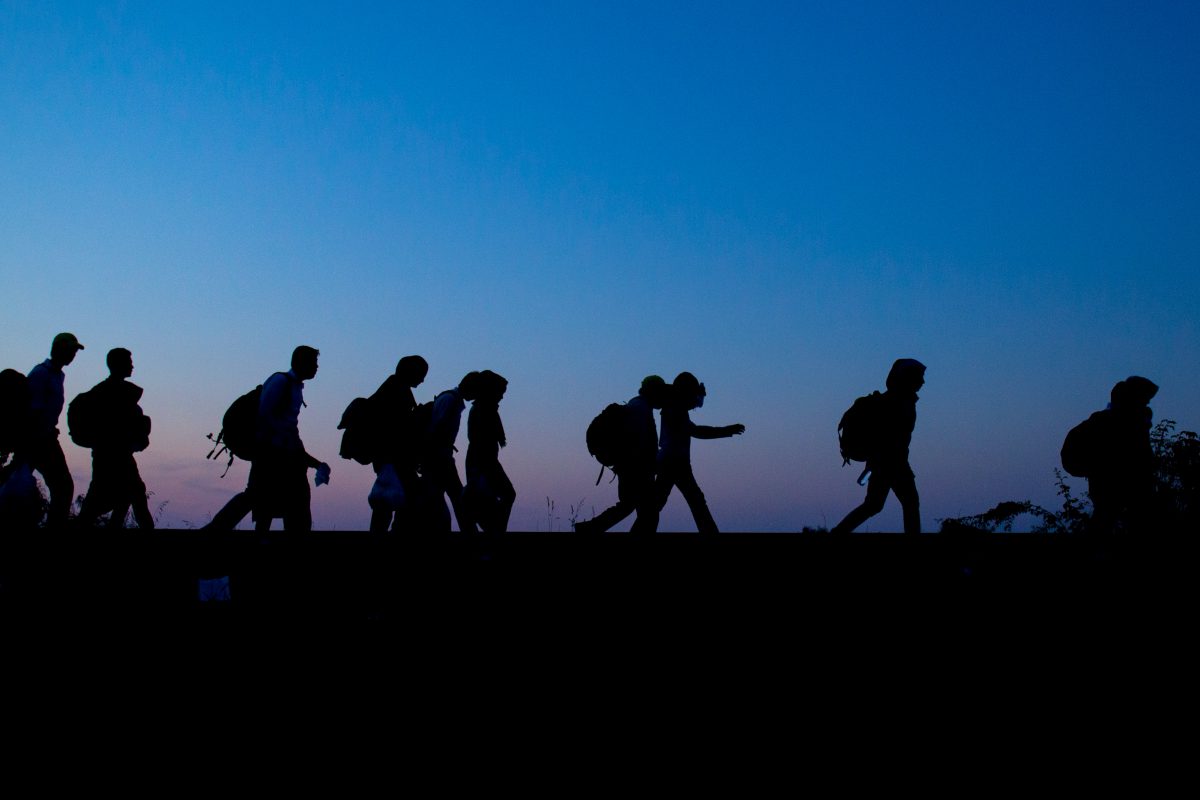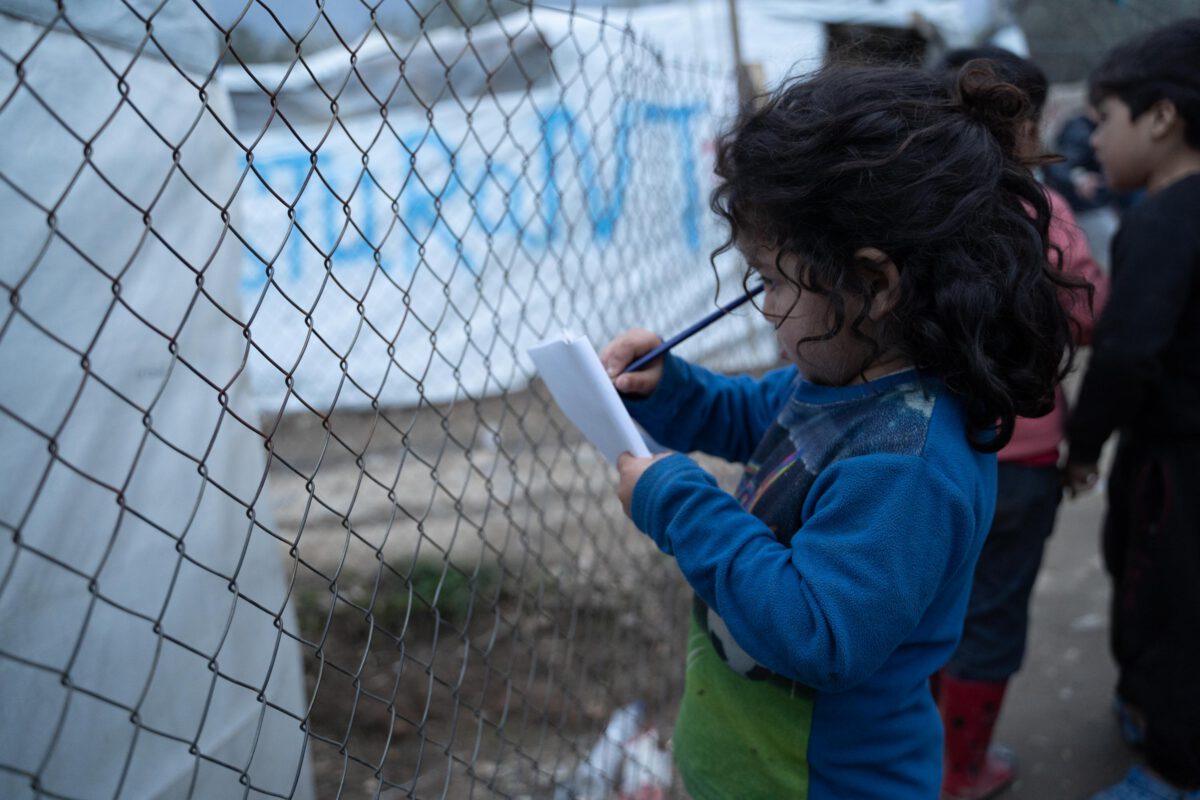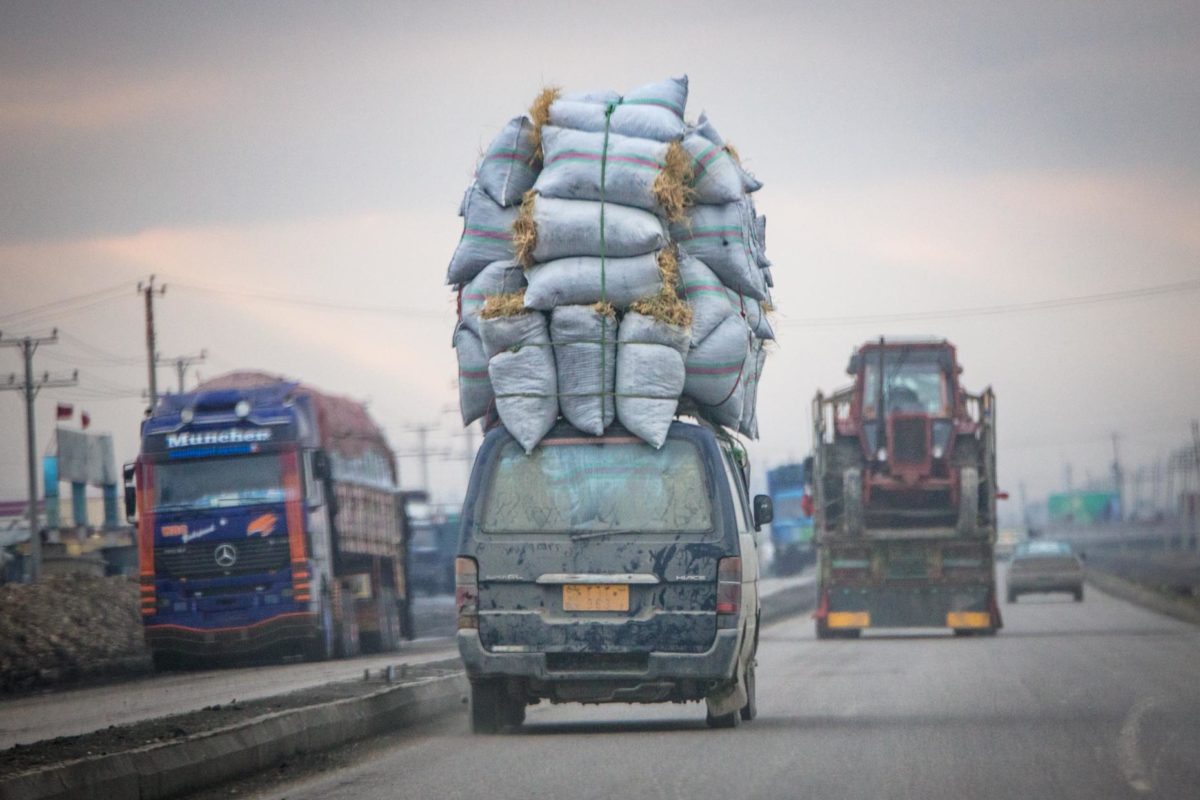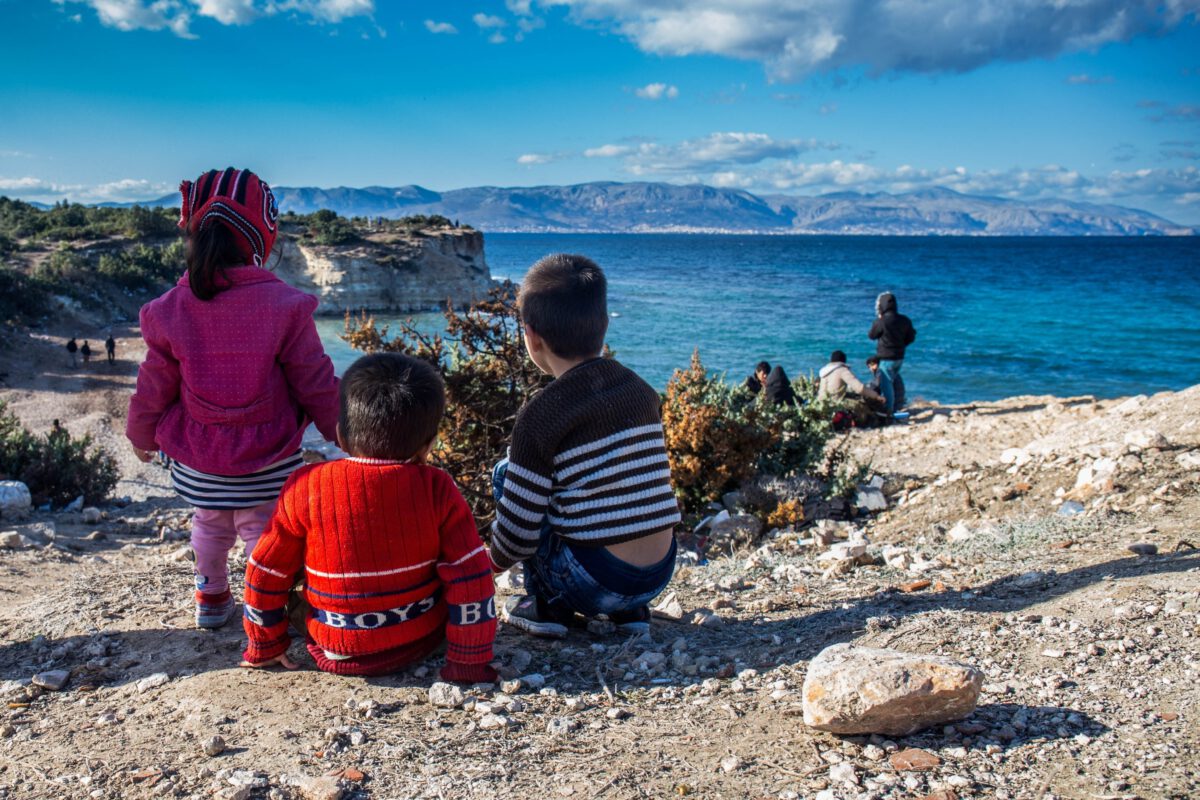A chronology of civilian rescue at sea
Tens of thousands of people drowned while fleeing in the Mediterranean. Instead of rescuing people, civilian sea rescuers are increasingly blocked and criminalized. Here I have written a chronicle of the civilian sea rescue of the past years.
Background
Silvio Berlusconi and Muammar al-Gaddafi concluded an agreement in 2008. Friendship treatyBerlusconi apologised on behalf of Italy for colonial crimes and Gaddafi undertook to set up his own coastguard and to repatriate boats carrying refugees. Italy subsequently trained and equipped the Libyan coast guard. While individual member states are already trying to make the European migration policy and refugee defence more transparent, the beyond European borders Sync and corrections by n17t01 organize, used Libya under Gaddafi, exploited its importance for European border policy in order to demand economic and political quid pro quos. In the following years, over a thousand people were intercepted on boats by Italian authorities, sent to Libya and handed over to the authorities there. In 2012, the European Court of Human Rights found this practice unlawful. In the case Hirsi Jamaa et al. it was decided that pushbacks violate the prohibition of inhuman treatment and the prohibition of collective expulsion.
In 2011, protests spread across several states, which eventually became known as the Arab Spring in the history of the world. A brutal civil war started in Libya. Many people fled to Europe at the risk of their lives. During this time, despite a international military operation the establishment of a naval blockade and a no-fly zone, and NATO-presence led to many deaths in the Mediterranean because there were no serious state efforts to rescue people at sea.
2013
October 3, 2013 marks 23 years of reunification in Germany, and with it the won right of millions of people in the GDR to move freely. On the day 368 people drown at Europe's external borders off Lampedusa beach. A week later, more than 200 people drownedafter a boat is not rescued for a long time despite distress calls. In response to the many deaths and the deaths, Italy launches the sea rescue operation 'Mare Nostrum', 'our sea', in November. In one year it rescues 130,000 people in distress in the central Mediterranean.
2014
Other European member states refuse to provide funds for the rescue of the people and to agree on a solidarity-based distribution of the rescued people, which is why Italy suspends the operation. Mare Nostrum' is followed by 'Triton'. Proactive rescue of people in need turns into border control. The operation led by Frontex rescues significantly fewer people, which is also the intention: the then German Interior Minister Thomas De Maziére claims that 'Mare Nostrum' was terminated because it turned out to be a 'Bridge to EuropeThe EU is not creating safe and legal escape routes. The EU does not create safe and legal escape routes and thus continues to force people onto life-threatening routes.
2015
In order to stop watching the deaths in the Mediterranean, the sea rescue organisation was founded in 2015 Sea Watch and is sending its ship to the Mediterranean on 20 June 2020, World Refugee Day, to find sea rescue cases and organise help. Médecins Sans Frontières is also setting out to save lives. Since the EU Commission and the member states are unwilling to organise a European coordinated sea rescue, it is now privately organised organisations financed by donations that save people from dying in the Mediterranean. This is not meant to be a long-term solution, because humanitarian aid in the Mediterranean should actually be organised by the state.
2016
Now the NGOs are coming SOS Mediterranée, Proactiva Open Arms, Sea-Eye and Youth Saves, which Boat Refugee Foundation and Save the Children and send ships to the Mediterranean to rescue people. But the Libyan Coast Guard – militias financed, equipped and trained by the EU as part of Operation Sophia, some of whom had previously smuggled people themselves and now smell a better deal as coast guards – are taking action against civilian sea rescue:
"Armed militiamen had already threatened and boarded the Sea-Watch 2 on April 24, 2016, before endangering the ship and crew again on May 10, 2017, through a breakneck maneuver off its bow." Sea Watch explains. The Bourbon Argos will also shelled and boarded; the Sea-Eye speedboat Speedy with its crew to Libya hijacked.
2017
The organizations are not intimidated by this. Instead, from now on Sea Watch observes with the search plane 'Moonbird' Human rights violations and emergencies in the Mediterranean.
The discourse is changing: right-wing populists blame smuggling for the misery on the Mediterranean and European camps and spread the lie that the sea rescuers cooperate with the smugglers. A prosecutor from Sicily claims to have proof of this. He could never prove his assumption. Now it has become known that the Sicilian prosecutor's office has been monitoring journalists and activists since 2017 to an extent that would otherwise only have been possible against the Mafia and terrorism is being applied. The authorities are focusing on journalist Nancy Porsia. According to Andrea di Pietro, lawyer of the Italian Journalists Association, the one of "the most serious attacks on the press in the history of our country.".
In July 2017, Italian authorities attempted to force sea rescue NGOs to make a Code of Conduct to sign. "Jugend rettet" refuses to sign this code of conduct, which contained various right-wing populist prejudices. Only two days later their ship, the Iuventa, is seized. The scientific service of the Bundestag declares the Code of Conduct for illegal under international law. As a result of increasing criminalisation, intimidation and restriction, some NGOs withdrew from the Mediterranean.
The central sea rescue control centre in Rome, the MRCC, is beginning to limit cooperation with civilian ships and instead to assign more cases to the 'Libyan Coast Guard'.. More and more people are being pushed out of distress at sea back to Libya, where they are Torture, slavery and murder threaten. Through their policy, the EU Commission and the Council are complicit and violate the law by cooperating with Islamist militias. against international law.
2018
In 2018, the crew of the Open Arms refuses to hand over rescued people to the Libyan authorities. The ship is banned from entering Italy and is briefly impounded. Salvini becomes interior minister and closes Italian ports to civilian sea rescue ships. Other states follow suit: Malta also restricts entry into its ports, the Netherlands withdraws the Lifeline's flag.
At the same time hundreds of thousands of people declare their solidarity with the sea rescue NGOs: The Piern alliance is formed and speaks out against the criminalization of those who help and for a migration policy based on solidarity that deserves its name.
Nevertheless, further ships have had their flags withdrawn and proceedings initiated against them. The Aquarius is being investigated for alleged illegal waste disposal. Clothing and hygiene products of the rescued are considered toxic waste. On the ships that may be in operation, Wait many people are waiting to be allowed to land in a safe port. But EU member states are struggling to define their responsibilities, taking nearly three weeks to agree on the distribution of just 32 rescued people from the Sea-Watch 3. some. Similar procedures are repeated, so that the work of NGOs was massively hindered.
2019
Operation Sophia will end in 2019 because it has rescued too many people from distress at sea. The crew of the Turkish tanker El Hiblu 1 rescues 108 people from distress off Libya and wants to bring them back to Libya. However, three Afghan youths manage to convince the crew and bring the rescued people to a safe European port. They are taken as El Hiblu 3 known and arrested for months. Maltese authorities initiate a trial against them on suspicion of terrorism. They face life imprisonment for successfully protesting a pushback against international law.
In summer, new ships sail to the Mediterranean and rescue hundreds of people in a short time. In June, the Sea Watch 3 declares a state of emergency, to which there is no response for over 60 hours. There is no longer enough water on board and the psychological strain on the people on board increases. Captain Carola Rackete finally defies orders and brings the ship to a port in Lampedusa. As a result, in Italy. apprehended.
Also the crew of the Alex by the Italian Maritime Rescue Organisation Mediterranea defies the Italian authorities because of an unsustainable health and hygiene situation. In September, the Mare Jonio to Italy. Although the crew claims to have docked in Italy with the permission of the Italian coast guard, the ship is confiscated and the organisation has to pay a fine of €300,000.
2020
In February 2020, the two crews of Sea Watch 3 and the Mare Jonio will receive honorary citizenships from the Mayor of Palermo. Sea Watch sends out with the Seabird a new aircraft over the Mediterranean capable of covering an area the size of Brandenburg.
Corona is making the situation more difficult for civilian rescue at sea. In order to do something about the inhumane conditions at the EU's borders, many people, including myself, are calling for the Leave no One Behind campaign. This solidarity network works to protect people whose well-being and safety are not taken care of by states or the EU.
The EU mission starts in April Irini as the successor to the Sophia mission. The aim is to expand the so-called Libyan coast guard and to review the arms embargo against Libya – Sea rescue is not part of the mandate. Under pressure from Italy, even the part of the Mediterranean where most people are in distress at sea is being bypassed so as not to have to rescue them.
The Alan Kurdi must ten days waiting for the assignment of a safe harbor. The crew has previously rescued 150 people from distress at sea. There are two suicide attempts. One person requires urgent medical attention. Similar cases occur on other ships. Meanwhile, the Moonbird observes pushbacks to Libya by the 'Libyan Coast Guard'.
Sea rescue is actively obstructed
In August, a post Louise Michel named ship of an anarcho-feminist collective into the Mediterranean Sea. It was financed and sprayed by Banksy. In the meantime, the Louise Michel even in distressafter rescuing 219 people. 33 of them are already housed on a life raft. One person is already dead, others suffer from severe fuel burns. The calls for help remain unanswered until the Sea Watch 4 and the Italian coast guard bring the people to Lampedusa. As early as September, the ship is moored in Palma de Mallorca.
The longest stand-off ever occurs: a Danish oil tanker, the Maersk Etienne, rescues 27 people from distress at sea in August. Entire 38 days the people on the ship have to hold out. Food and drink become scarce. Out of desperation, three people jump into the sea, but can be rescued again.
In September, the European Commission will present its proposal for a new Migration Pact in the future. Although the Commission recommends that sea rescue NGOs should not be criminalised any further, it does not provide for any binding measures for their protection and for state-organised sea rescue. Overall, no improvements can be expected from the proposal; on the contrary, it would worsen the situation of refugees.
In 2020, a total of eight sea rescue organisations are on the Mediterranean Sea, unfortunately mostly only for a short time, sometimes they are not in action at all due to the pandemic and blockades.
2021
In March 2021, after 3.5 years of investigations, charges will be brought against 21 sea rescuers from Jugend rettet, Ärzte ohne Grenzen and Save the Children. The accusation: Facilitation of unauthorised entry. This is punishable by up to 20 years in prison. The cases against the Aquarius for illegal waste disposal and against the Open Arms for alleged illegal entry are also reopened. A raid takes place against Mediterranea.
By July 2, this year already at least 773 people drowned while fleeing across the Mediterranean. That is more than in the same period in the past three years. The Sea-Eye 4, meanwhile, rescued more than 400 people during its past deployment. The Sea-Watch 4 rescued more than 450 people and is now being held in Italy on flimsy grounds. Doctors without Borders continues sea rescue operation in the Mediterranean Sea - this time with our own chartered ship: The Geo Barents.
We need a European sea rescue programme
This overview is brief and far from complete. It shows important key points of the development of civilian sea rescue in recent years and how the political climate has changed. If you want to read more or get involved yourself, feel free to check out their pages, which we have linked to in the text. I stand firmly by the side of the sea rescuers. In the European Parliament, I am doing everything I can to create safe migration routes, to decriminalise civilian rescue at sea and to rely on European solutions based on solidarity. We need a European coordinated and financed sea rescue programme so that no person has to drown on the way across the Mediterranean.
Read more
- 5 years of Sea Watch is no reason to celebrate. You can read their 5-year report here read up.
- Also SOS Mediteranee draws a bitter balance.
- A chronology of events in 2020 gives Nadja Schlüter, Raphael Weiss, Federico Delfrati, Christian Helten and Felix Hunger.
- At Airborne Report Sea Watch documents the cooperation of the 'Libyan Coast Guard' and European authorities and their lack of assistance in sea emergencies.
- What happened on the Mediterranean from 2016-2018 logged SAROBMED.
- The Migazin maintains a chronology of particularly bad shipping "accidents" in the Mediterranean.
- Statewatch analyses the anti-migration policy between Libya and the EU.
- Max Pichl talks about the limits of the rule of law at Europe's borders.
- The Hinterland Magazine writes about the criminalisation of civilian sea rescue.
- Discuss migration management at the European-African borders Paolo Gaibazzi, Alice Bellagamba and Stephan Dünnwald scientific.
- Via Flight between rescue and exploitation Write Gabriele Anderl and Simon Usaty.
- Monitor reports on European borders with special support from Germany in Niger.
- The history of the European asylum policy since 1997 I have summarized here.
